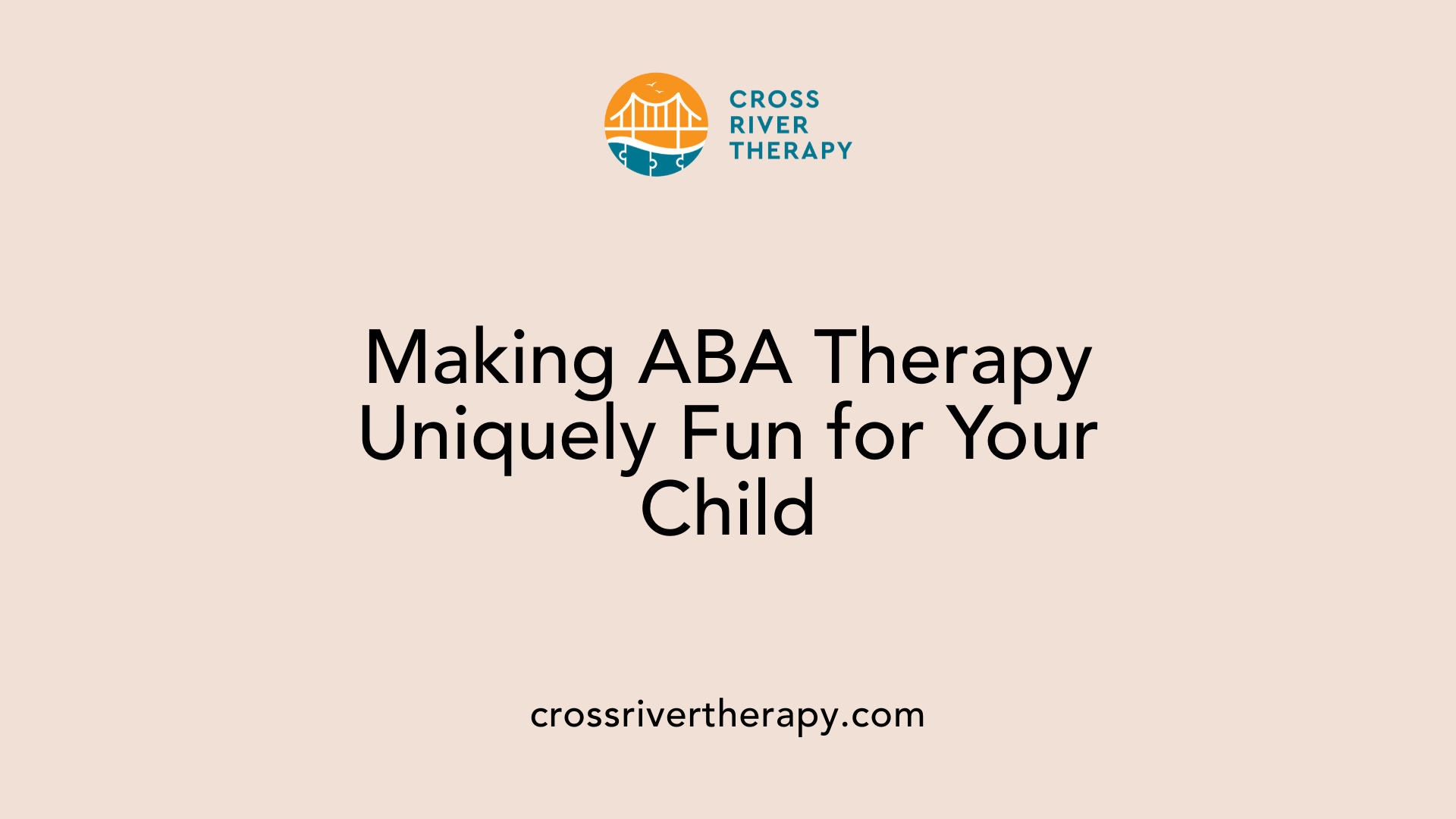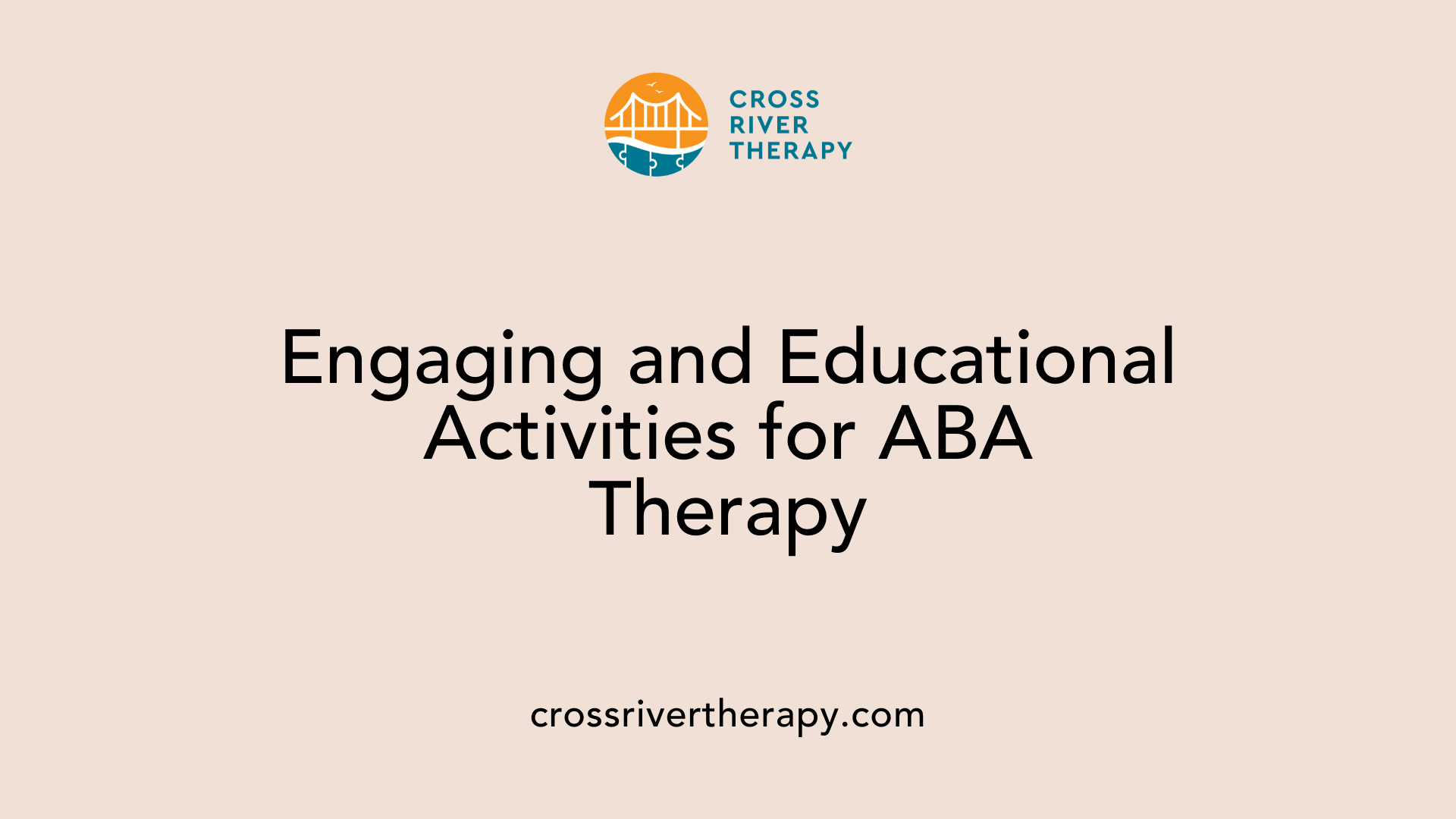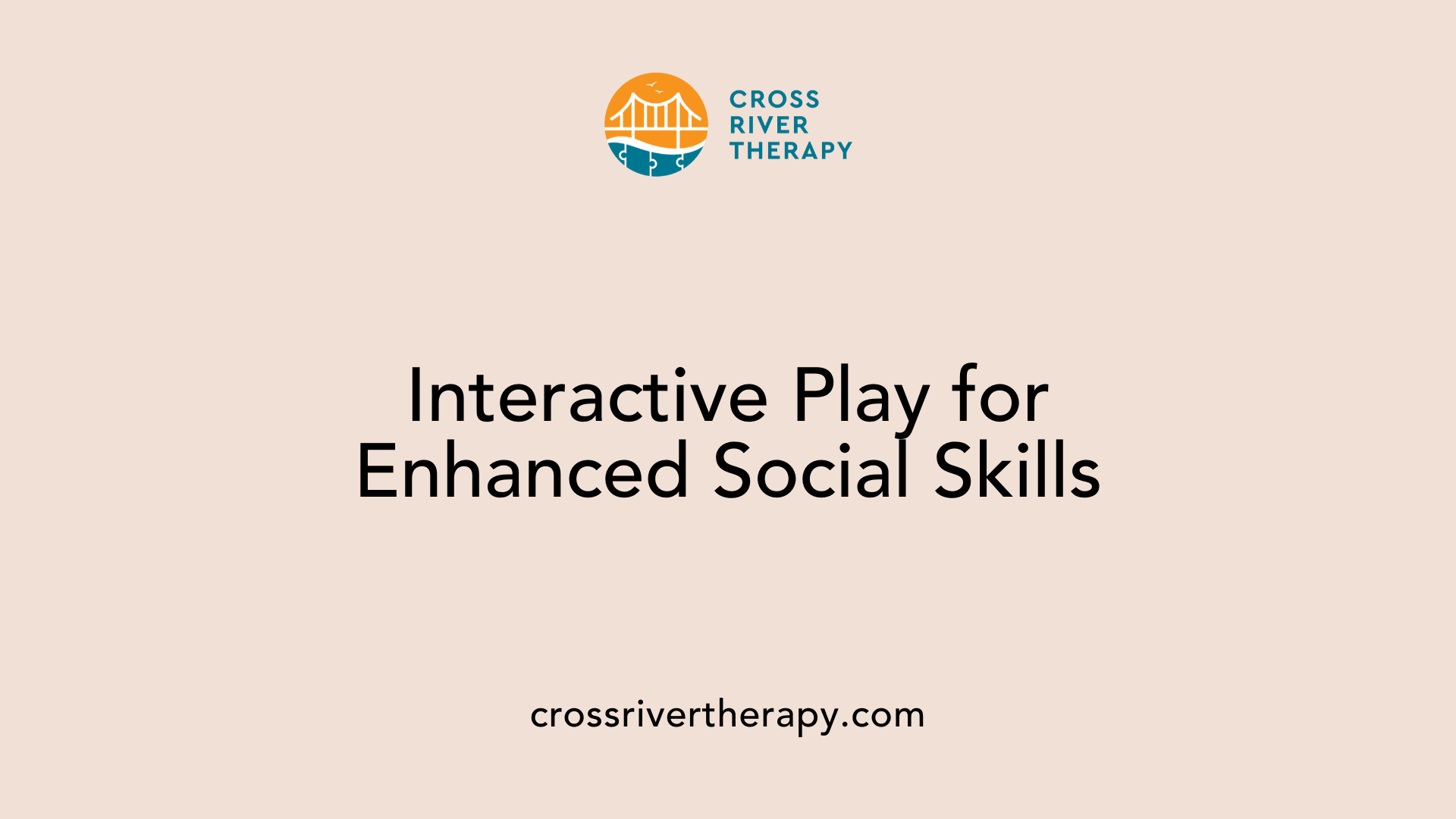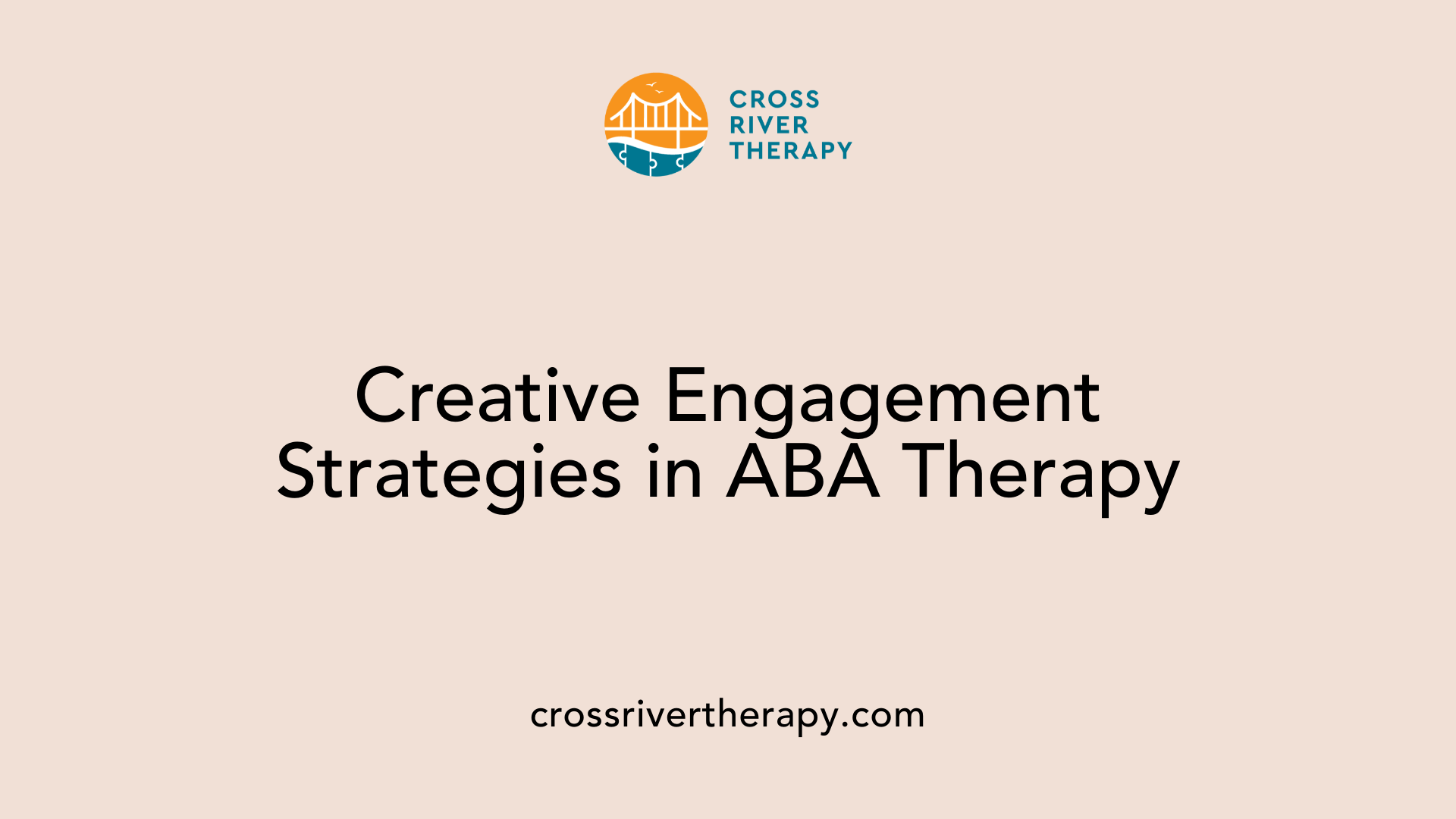How to Make ABA Therapy Fun and Engaging for Children
Making ABA Therapy an Adventure for Children
Bringing Joy to ABA Therapy Sessions
Applied Behavior Analysis (ABA) therapy is essential for children with autism spectrum disorder, focusing on developing life skills through behavior modification. Yet, there is a growing recognition of the importance of fun and engagement in therapy to optimize its effectiveness. This article explores innovative strategies to make ABA therapy sessions enjoyable and bountiful learning experiences for children.
Personalizing ABA Therapy: Tailoring Experiences to Your Child

How can you make ABA therapy fun and unique for your child?
To make ABA therapy enjoyable and distinct for your child, it's essential to conduct sessions in settings that feel comfortable and natural. This approach helps reduce the perceived rigidity often associated with traditional therapy. Incorporating your child's unique interests into activities can significantly boost their motivation and participation.
Engaging in play-based learning is a great way to connect with your child while teaching vital skills. Games that involve taking turns or interactive activities can effectively enhance social skills and overall engagement. For example, using favorite toys or themes during sessions can make learning feel more like a fun interaction rather than a chore.
Positive reinforcement plays a crucial role in maintaining motivation. Celebrating small achievements with verbal praise, stickers, or even allowing extra playtime can encourage your child and foster a positive learning environment. This ongoing encouragement can help them build confidence, turning each session into an enjoyable experience.
Balancing structured routines—essential for creating predictability and security for your child—with opportunities for emotional connections also enhances their learning. By allowing moments of fun and relaxation within a schedule, children can experience joy while mastering essential skills. This blend of structure and play makes for an enriching therapy experience tailored to their needs.
Understanding the Core: The Seven Rules of ABA Therapy

What are the 7 rules of ABA?
The seven rules of Applied Behavior Analysis (ABA) serve as foundational guidelines for effective therapy and interventions. These rules ensure that the practice remains focused and results-driven:
- Applied: Interventions target socially significant behaviors to enhance the child’s quality of life. This factor is essential in ensuring that the skills learned are relevant and transformative.
- Behavioral: All behaviors need to be observable and measurable. This allows for accurate tracking of progress and adjustments in strategies based on clear data.
- Analytic: Interventions must be based on evidence. Practitioners use actual behavior data to guide decisions, ensuring that methods are effective and appropriate.
- Technological: Each procedure in ABA should be clearly defined and conveyed so that it can be easily replicated by others involved in therapy.
- Conceptually Systematic: Techniques used are derived from established research principles, maintaining consistency and reliability in approaches.
- Effective: Interventions should show measurable improvement in behavior, emphasizing the need for interventions that produce significant, positive outcomes.
- Generality: The changes achieved should be maintained over time and applicable across different settings, ensuring that learning is lasting and versatile.
These rules underscore the value of behavior-oriented interventions, making ABA therapy a highly structured yet adaptable approach.
Incorporating Play into ABA Therapy: Activities That Engage and Educate

What activities can you do during ABA therapy?
During ABA therapy, a variety of activities can be utilized to support children's development, enhancing their learning experiences through play that is both enjoyable and educational. Common activities include:
- Sorting Tasks: Engaging children in sorting by colors, numbers, or emotions aids in improving their organizational and cognitive skills.
- Puzzles: Completing puzzles enhances problem-solving abilities while boosting fine motor skills and attention span.
- Social Interaction Games: These promote vocabulary development and help children understand social cues and interactions.
Visual supports such as timers help children comprehend and follow tasks effectively. Utilizing strategies such as positive reinforcement encourages desirable behaviors, while negative reinforcement can relieve children from undesirable situations following positive actions.
Use of structured play and sensory activities
Structured routines play a critical role in ABA therapy. They provide predictability, which not only reduces anxiety but also fosters cooperative behavior. Some examples of structured play include:
- Sensory Play: Activities like sensory bins expose children to different textures, promoting sensory exploration in a safe environment.
- Role-Playing: This allows children to practice social skills, interpreting real-life scenarios while enjoying the process.
Technology, such as AAC apps, supports communication skills, making sessions more dynamic. By incorporating children’s interests into the context of these activities, therapists can significantly boost motivation and engagement, ensuring that learning is both effective and fun.
Interactive Play: A Gateway to Social Skill Development

What is interactive play in ABA?
Interactive play in Applied Behavior Analysis (ABA) is vital for fostering essential social skills in children with autism. This form of play encourages sharing, turn-taking, and collaboration, helping children engage more effectively with others. Children with autism may gravitate towards solitary play due to difficulties with language or adapting to changes in play scenarios. However, interactive play provides opportunities to learn and practice these crucial skills in a supportive environment.
To promote interactive play, caregivers can utilize the R.O.C.K. strategy:
- Repeat: Reinforce social behaviors through repeated exposures.
- Offer chances to request: Provide opportunities for the child to initiate interactions.
- Cue for turns: Prompt children to take turns, enhancing their understanding of sharing.
- Keep it fun: Ensure the play remains enjoyable to maintain engagement.
Different play types, such as exploratory, cause-and-effect, and pretend play, each contribute uniquely to skill development. For instance, pretend play can help children navigate social cues within role-playing scenarios.
Strategies to enhance interactive play experiences
To create successful interactive play sessions, several strategies can be incorporated:
- Choose engaging toys: Select toys that align with the child's interests, making them eager to participate.
- Organize playdates: Arrange interactions with peers who share similar interests, providing a comfortable social setting.
- Use supportive strategies: Techniques such as visual schedules and prompts can guide children through play, helping them feel less overwhelmed.
By adopting these techniques, parents and caregivers can significantly enhance the interactive play experience and thereby promote social skill development. This engaging environment not only facilitates learning but also boosts confidence, fostering a sense of achievement during play.
Creative Strategies to Boost Engagement in ABA Therapy

Incorporation of Technology and Multimedia
Integrating technology into ABA therapy sessions can significantly enhance engagement. Tools such as Augmented and Alternative Communication (AAC) apps provide children with diverse ways to express themselves. These apps can be particularly effective in developing communication skills by offering visual supports and interactive learning experiences. Additionally, educational games and video modeling help reinforce social interactions while making learning enjoyable.
Using multimedia resources allows therapists to cater to different learning styles, ensuring that each child's unique needs are met. Engaging videos or story-based apps teach essential skills like emotion recognition and conversational practice, creating a dynamic environment that holds children's attention.
Role of Personalized and Flexible Activities
Tailoring activities to match a child’s interests is a powerful approach in ABA therapy. When children engage with themes they enjoy, such as dinosaurs or superheroes, their motivation increases, making learning more impactful. Flexible activities like role-playing or sensory play create opportunities for children to practice skills in fun and natural contexts.
Moreover, breaking tasks into manageable steps and allowing children to choose activities fosters a sense of autonomy, further enhancing engagement. This personalized approach ensures that therapy feels less like a chore and more like a rewarding experience—essential for achieving positive outcomes in ABA.
Building a Supportive Home Environment for ABA
Role of Structured Routines and Positive Learning Environments
Creating a structured routine is essential for effective Applied Behavior Analysis (ABA) therapy at home. A predictable schedule helps children with autism feel secure, reducing anxiety and fostering learning. Incorporating visual schedules allows children to anticipate daily activities and eases transitions between tasks. Moreover, a positive learning environment should be organized and calming, filled with appropriate materials like visual aids, sensory items, and fun rewards. This setup significantly enhances a child's focus and participation during therapy sessions.
Involving Family in the ABA Process
Family involvement is a crucial aspect of maximizing the benefits of ABA therapy. Engaging family members during sessions can strengthen the support system around the child, making it easier for them to generalize the skills learned in therapy to real-life situations. Parents can also collaborate closely with ABA therapists, sharing insights about their child's interests and progress. This partnership fosters tailored strategies and helps create a unified approach to learning, notably enhancing motivation and engagement in therapeutic activities.
The Ripple Effect of Fun in ABA Therapy
Making ABA therapy enjoyable is not merely about making sessions more pleasant; it's crucial to the success and effectiveness of the therapy. By engaging children through play, personalization, and creativity, caregivers and therapists can foster a deeper connection between the child and their learning environment. This increased engagement translates into better learning outcomes, where children are more likely to participate actively and generalize taught skills to their everyday lives. Ultimately, a fun and engaging approach to ABA therapy lays the groundwork for lifelong developmental achievements.
References
- ABA Therapy Activities To Do At Home - Autism Parenting Magazine
- A Guide to Creating Engaging ABA Activities for Children
- 10 Tips To Be More Involved In Your Child's ABA Therapy Progress
- Making ABA Therapy Fun: Incorporating Play and Activities
- The Ultimate Guide to Creating Fun ABA Therapy Sessions
- ABA Therapy Activities that Are Interesting and Fun
- Harnessing the Power of Play in ABA Therapy for Children
- Incorporating Play and Fun into ABA Therapy - Stand Out Corp
- The Fundamentals Of ABA Therapy For Children



